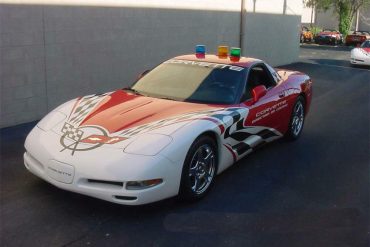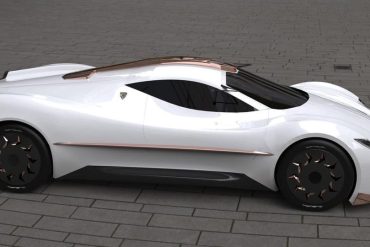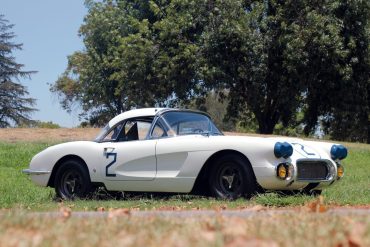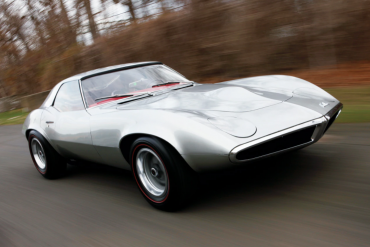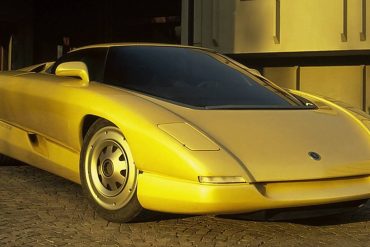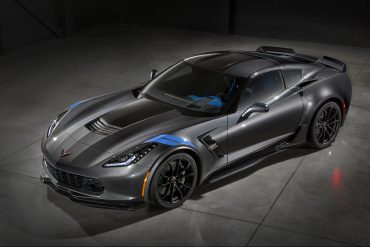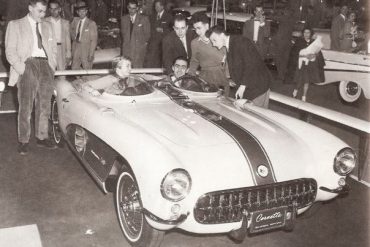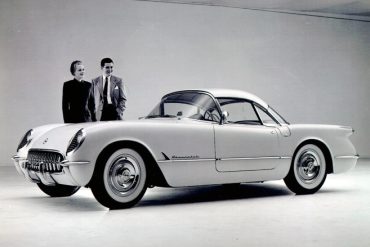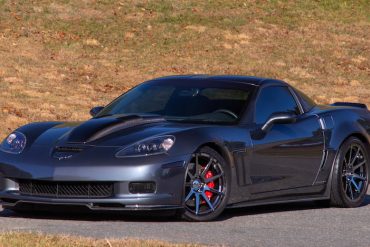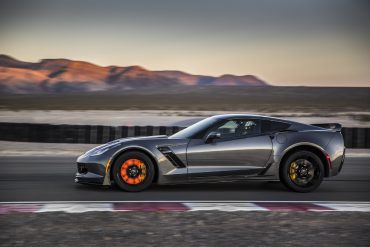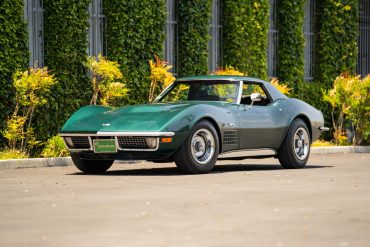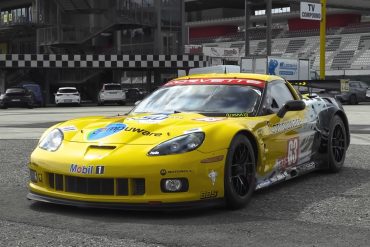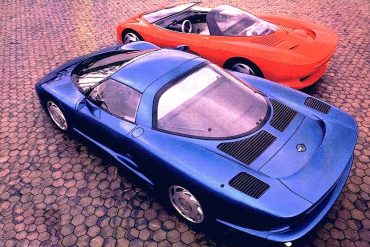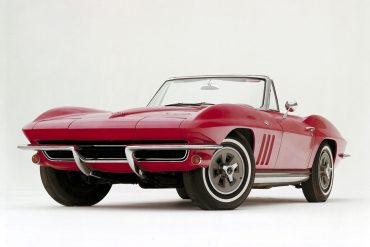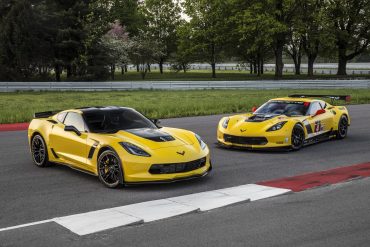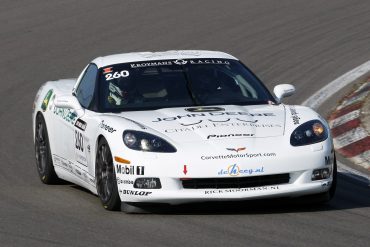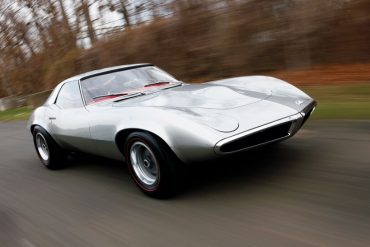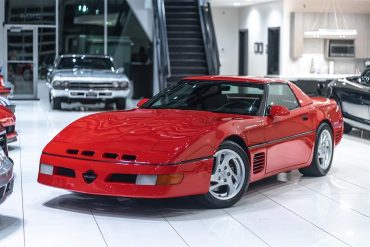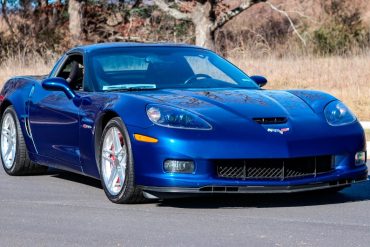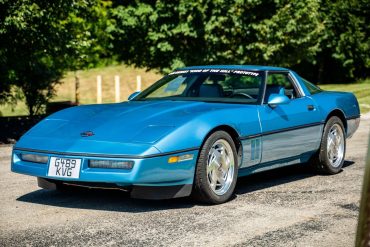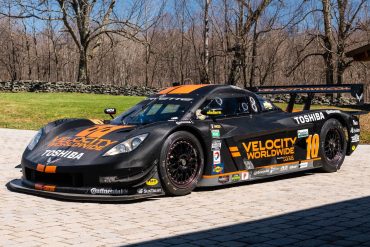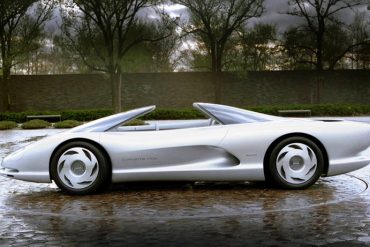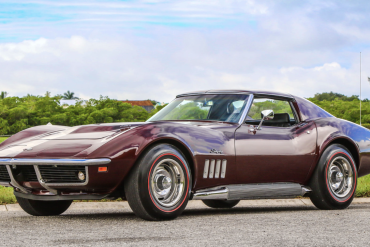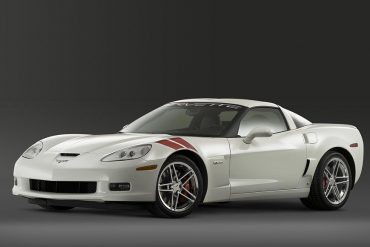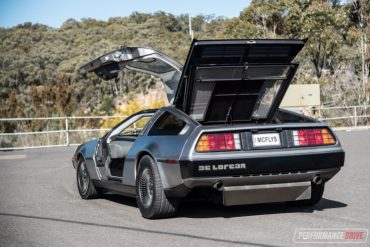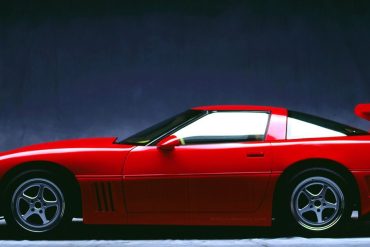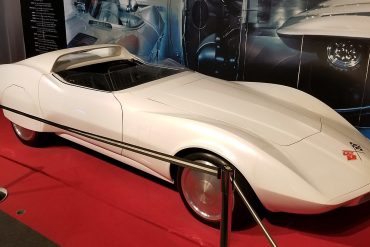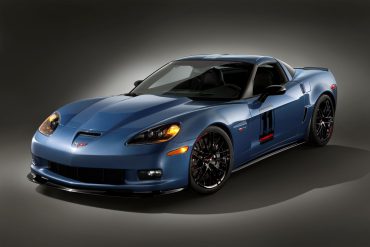There’s a long, rich history between the Chevrolet Corvette and the DeLorean Motor Company (DMC), or at least between GM...
Millions of spectators, broadcast viewers and listeners from around the world will be focused on the western region of France as one of Chevrolet’s fifth-generation family of Corvettes (referred to as C5) will pace an international field of sports cars as the Official Pace Car of the 67th running of the Le Mans 24 Hour race on June 12-13, 1999.
As Corvette enthusiasts, we know that the modern generations of our favorite car last (at most) between 7 to 10...
The story of the Corvette and how it came to race at Le Mans is one in which the dreams of a number of individuals intersect, over a prolonged period of time. While each of these dreamers came from vastly different backgrounds and held often times very different agendas, they all shared a common vision—an American sports car winning the 24 Hours of Le Mans. For Le Mans, the Sebring #2 car was renumbered as #1.
With the passing of successive generations, a nearly endless number of vehicle designs and concepts have been pitched to execs...
The Nivola may be considered Bertone’s homage to the most fascinating American sports car: the Chevrolet Corvette. The sophisticated mechanical unit of the ZR-1 was interpreted by Bertone in a European key. Bertone designed a special chassis to make a sporty "boat" with a mid engine. This mechanical layout made it possible to exploit all the power of the engine when accelerating and warrant perfect roadholding on bends.
This special edition takes the upgraded handling and appearance that comes with the Grand Sport moniker and adds some special cosmetic touches for extra uniqueness. Along with a stunning gray metallic paint color, it features blue accents that harken back to previous Grand Sports. A representation of the original Grand Sport race car is embossed onto the headrests. Powered by the regular (and excellent) LT1 V-8, it features magnetic ride control, an electronic limited-slip differential, and Grand Sport wheels.
The Corvette SS racing car and its mule test car were planned as far back as August of 1956, well before the Super Sport show car. However, that one was referred to within GM as the XP-64, and it was finished in march, well after the show car had been on the show circuit for a couple of months.
Besides a normal convertible model, the 1954 Chevrolet Corvette line-up also featured a hardtop, actually a Convertible Coupe. It was one of the Corvette based Motorama dream cars shown in 1954 and was a version fitted with a removable hardtop. The Advertising Brochure even called out the removable hardtop design.
To commemorate its quarter-century milestone, Callaway Cars collaborated with Chevrolet, arranging a production run of 25 uniquely prepared 2012 Corvette Grand Sport coupes and convertibles. General Motors supplied special parts and procedures on the Bowling Green production line to facilitate final assembly at Callaway factories. Then, the performance and identity components are installed by Callaway. The 25th Anniversary Edition produced 620 bhp and 555 lb-ft of torque.
The C7 Z06 enters supercar territory with race-proven design, advanced technologies and world-class performance. With track-focused Z07 performance package, 2015 Corvette Z06 delivers faster lap times than 2013 Corvette ZR1. It is the first Corvette Z06 to offer supercharged engine, paddle-shift automatic transmission and removable roof panel for coupes, and convertible model. New LT4 supercharged 6.2L V-8 SAE-certified at 650 hp and 650 lb-ft of torque.
The 1971 ZR2 Corvette stands as a remarkable feat of engineering, even exceeding the legendary L88 in rarity. Creature comforts...
The Corvette C6.R was introduced to the world in 2005, as both the motorsports testbed of the forthcoming C6 Z06 and C6 ZR1, and as...
While it was understood that the Corvette Indy Concept would never be fully realized as a production vehicle, it paved the way for the creation of the twin-turbo CERV III. The CERV III (Chevrolet Engineering Research Vehicle No. 3) was introduced in January, 1990 at the International Auto Show in Detroit, Michigan. Like the latter iteration of the Corvette Indy Concept car, the CERV III was fitted with a 5.7 Liter, 32-valve, dual-overhead cam LT5 engine that featured twin turbochargers. It had 650 hp and 655 lb/ft of torque and top speed of 225 mph.
The L84 was the most powerful 327 available for the 1965 Corvette thanks to its Ram-Jet Fuel Injection which was an expensive $538 option. For competition, race customers had a range of options available to them including the N03 36-Gallon Fuel Tank, closer rear axle ratios and the C48 Heater/Defroster Delete (-100).
The 2016 Corvette Z06 C7.R Edition is a road-going, track-capable homage to the Corvette Racing C7.R racecars. It’s offered in Corvette Racing’s signature yellow livery – or black – with coordinated exterior and interior accents. Only 500 examples of the C7.R Edition were built and all included the Z07 Performance Package with carbon ceramic brakes, as well as a specially serialized vehicle identification number. Corvette special editions don't get more fun than this.
In late 2007 Corvette Europe approached the FIA seeking approval to race a C6 Coupe in the GT4 category. After much study the FIA approved their request. Kroymans shipped a new 2008 C6 Z51 six-speed coupe to Callaway Competition in Leingarten, Germany. In less than six weeks the Callaway team stripped the new car of all non-essential parts including carpet and standard seats.
When first introduced to the world by Pontiac in 1964, the car showed so much promise that Chevrolet (allegedly) put a swift end to its development to prevent its production from hindering the sales of the Corvette. Afterall, with the introduction of the 1963 Split-Window Corvette, Chevy was finally seeing an increase in sales, something lacking for most of the first-gen.
Chevrolet's introduction of the LT1 in 1992 as the base engine in the Corvette phased out the L98 based Callaway Twin Turbo. Previously, Callaway Corvettes made their increased power through positive manifold pressure; now they made it through increased displacement and finesse. Initially called the CL1 or CR1, they designated the chassis they were built upon. They were based on the pushrod LT1 cars (CL1) or the 32 valve DOHC LT5 ZR-1 cars (CR1).
Kissimmee 2023 is happening in less than a week and they just announced a very interesting lot, a 2006 Chevrolet...
This 1988 Chevrolet Corvette holds significance in the Corvette community as one of two remaining factory “King of the Hill”...
The Corvette Daytona was an officially sanctioned race car created to compete in the now-defunct Rolex Race Car Series during...
The first of these cars was the 1985 Corvette Indy Concept vehicle. It was developed as a “pushmobile,” meaning that it was a non-functioning, full-size clay mockup that was developed to test market interest in the concept. The car featured the same mid-engine configuration that Zora Arkus-Duntov had always envisioned for the Corvette program.
Power and blinding acceleration were the driving forces behind the development of the 1968-1969 Chevrolet Corvette 427. Only 390 1969 Corvettes were built with the famous L89 427 and while the L89 option was chosen 624 times in 1968, it is still a rare beast relative to total production. The 427 CI engine was good for 435 HP and a strong 460 lb-ft of torque making it one of the best-accelerating cars of its time.
The Ron Fellows ALMS GT1 Champion Edition Corvette was introduced as part of the 2007 Corvette line-up. To commemorate Mr. Fellows long and successful career with the Corvette Racing program, Chevrolet introduced the Ron Fellows Championship Edition Z06 Corvette as part of their 2007 model line-up. It was released as a commemorative model to celebrate one of GM's winning-est drivers, but did little to impress enthusiasts or collectors when first introduced.
Food for Thought: Why not Build a Corvette-Powered DeLorean DMC-12 There have been few cars in automotive history more iconic...
Reeves Callaway has always had a dream of competing a Corvette of his own at the 24 Hours of Le Mans, France. The idea begin with the body work for a street version, but one thing led to another, and a full race version was completed as well. The street version is almost identical to the race version because the hood, tail, rocker panels, and lower door halves, are all made of carbon fiber, just like the race version.
The Astro II was one of the most significant case studies of Duntov’s outright refusal to let his mid-engine dreams die, and as such, ultimately entered the history books as a precursor to the eventual mid-engine, C8 Corvettes of today. The Astro II was designed in a way that was more representative of the Corvette’s typical styling cues, than that of The Astro I.
Chevrolet begins a new chapter in its storied racing legacy with the introduction of the new mid-engine Corvette race car, known as the C8.R. The C8.R will be Chevrolet’s first mid-engine race car to compete in IMSA’s GTLM class and the first clean sheet race car design since the C5.R debuted in 1999. It will make its racing debut at Rolex 24 at Daytona on Jan. 25, 2020. The C8.R is based on the strong foundation of the 2020 Corvette Stingray.
The Z06 Carbon was created to celebrate the 50th anniversary of the first appearance of the Corvette at the 24 Hours of Le Mans when John Fitch and Briggs Cunningham won their class and finished eighth overall. The Carbon edition is essentially a Z06 with a ZR1 chassis and some of the carbon skin. With only 500 examples made, this is one rare and special looking Vette. The limited edition is distinguished by an aggressive look and black accents, reminiscent of the Porsche 911 GTS range.



